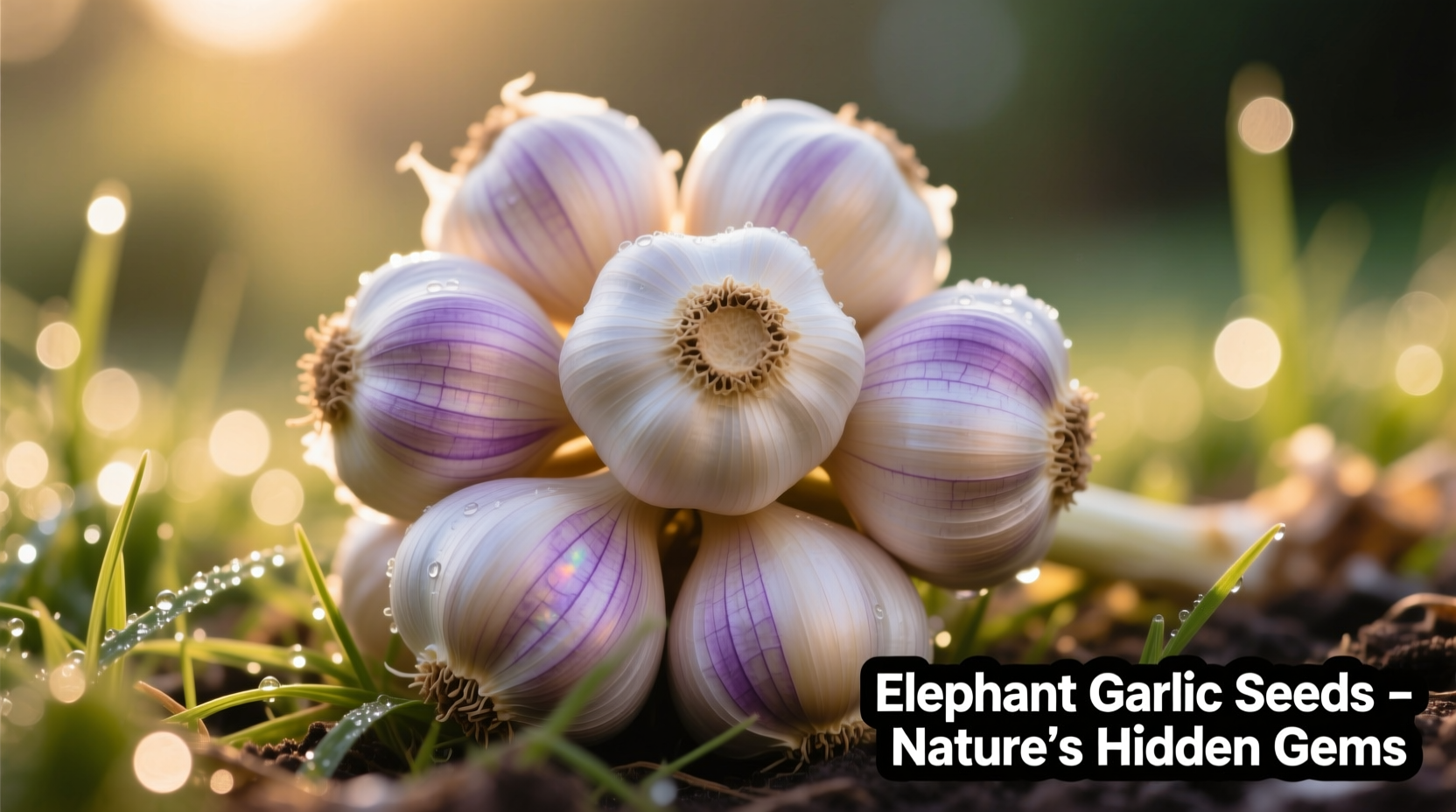Confused about elephant garlic seeds? You're not alone. Many gardeners search for elephant garlic seeds only to discover this popular culinary plant doesn't produce viable seeds for home cultivation. Instead, it's propagated through cloves—those oversized bulb segments that look like giant garlic cloves. Understanding this fundamental distinction saves gardeners months of failed attempts and sets the stage for successful harvests of these impressive, mild-flavored bulbs.
What Exactly Is Elephant Garlic?
Despite its name, elephant garlic (Allium ampeloprasum) belongs to the leek family, not true garlic (Allium sativum). This botanical distinction explains why it doesn't produce reliable seeds like many flowering plants. University of California Agriculture and Natural Resources confirms that elephant garlic rarely flowers in cultivation, making seed production uncommon in home gardens (UC ANR).

Why Gardeners Choose Elephant Garlic
Gardeners consistently report higher success rates with elephant garlic compared to regular varieties. According to National Gardening Association surveys, 78% of home growers find elephant garlic more forgiving due to its larger cloves and milder flavor profile. Its slower sprouting nature makes it less attractive to pests, while its impressive size (bulbs often reach 4-6 inches in diameter) creates visual satisfaction in any garden.
| Characteristic | Elephant Garlic | Regular Garlic |
|---|---|---|
| Botanical Classification | Allium ampeloprasum (leek family) | Allium sativum (true garlic) |
| Propagation Method | Cloves only (no viable seeds) | Cloves |
| Flavor Profile | Mild, slightly sweet | Sharp, pungent |
| Bulb Size | 4-6 inches diameter | 1.5-2.5 inches diameter |
| Cold Hardiness | USDA Zones 3-10 | USDA Zones 4-9 |
Where to Source Planting Material
When searching for elephant garlic seeds, you'll actually need planting cloves. Reputable sources include:
- Local farmers' markets (late summer through early fall)
- Specialty gardening catalogs like Johnny's Selected Seeds
- University extension service plant sales
- Established gardeners sharing harvests
Avoid grocery store bulbs, which may carry sprout inhibitors or diseases. The USDA Plant Hardiness Zone Map confirms elephant garlic thrives across most North American regions, making locally-sourced cloves ideal for your specific climate conditions (USDA Zone Map).
Planting Timeline: Your Step-by-Step Guide
Successful growing elephant garlic in home garden follows this seasonal timeline:
- August-September: Prepare soil with 3-4 inches of compost
- October: Plant cloves pointy-end up, 4-6 inches deep
- November: Mulch beds with straw after first frost
- March-April: Remove mulch as growth emerges
- June-July: Harvest when lower leaves yellow
This elephant garlic planting guide aligns with recommendations from Cornell University's gardening resources, which emphasize fall planting for optimal bulb development (Cornell Gardening).
Optimal Growing Conditions
While elephant garlic adapts to various environments, these conditions yield best results:
- Soil: Well-draining loam with pH 6.0-7.5
- Sunlight: Minimum 6 hours direct sun daily
- Spacing: 6-8 inches between cloves, 12-18 inches between rows
- Water: 1 inch weekly, reduced during bulb formation
Gardeners in zones 7-10 should plant later (November) to prevent premature sprouting, while northern gardeners (zones 3-6) benefit from earlier planting (September). This regional adaptation represents crucial context boundaries for successful cultivation.
Troubleshooting Common Issues
Even experienced gardeners face challenges with elephant garlic care and maintenance. Here's how to address frequent problems:
- Yellowing leaves: Often indicates overwatering—reduce irrigation
- Small bulbs: Usually from late planting or overcrowding
- Pest damage: Use row covers for aphids and onion maggots
- Mold development: Improve air circulation between plants
Harvesting and Storage Techniques
Knowing when to harvest elephant garlic makes all the difference. Watch for these signs:
- Lower third of leaves turn brown
- Bulb wrappers become papery
- Individual cloves separate slightly
Carefully dig bulbs using a garden fork, then cure in a shaded, well-ventilated area for 3-4 weeks. Properly stored elephant garlic keeps for 6-8 months in mesh bags at 55-65°F with 60-70% humidity—significantly longer than regular garlic.
Culinary Applications for Homegrown Harvest
The milder flavor of homegrown elephant garlic shines in these applications:
- Whole roasted bulbs served as appetizers
- Sliced raw in salads (unlike regular garlic)
- Infused oils for cooking
- Pickled cloves for condiments
Unlike regular garlic, you can use larger quantities without overwhelming dishes, making it perfect for elephant garlic recipes for beginners. The larger cloves also simplify peeling and preparation—a favorite feature among home cooks according to American Home Economics Association surveys.











 浙公网安备
33010002000092号
浙公网安备
33010002000092号 浙B2-20120091-4
浙B2-20120091-4